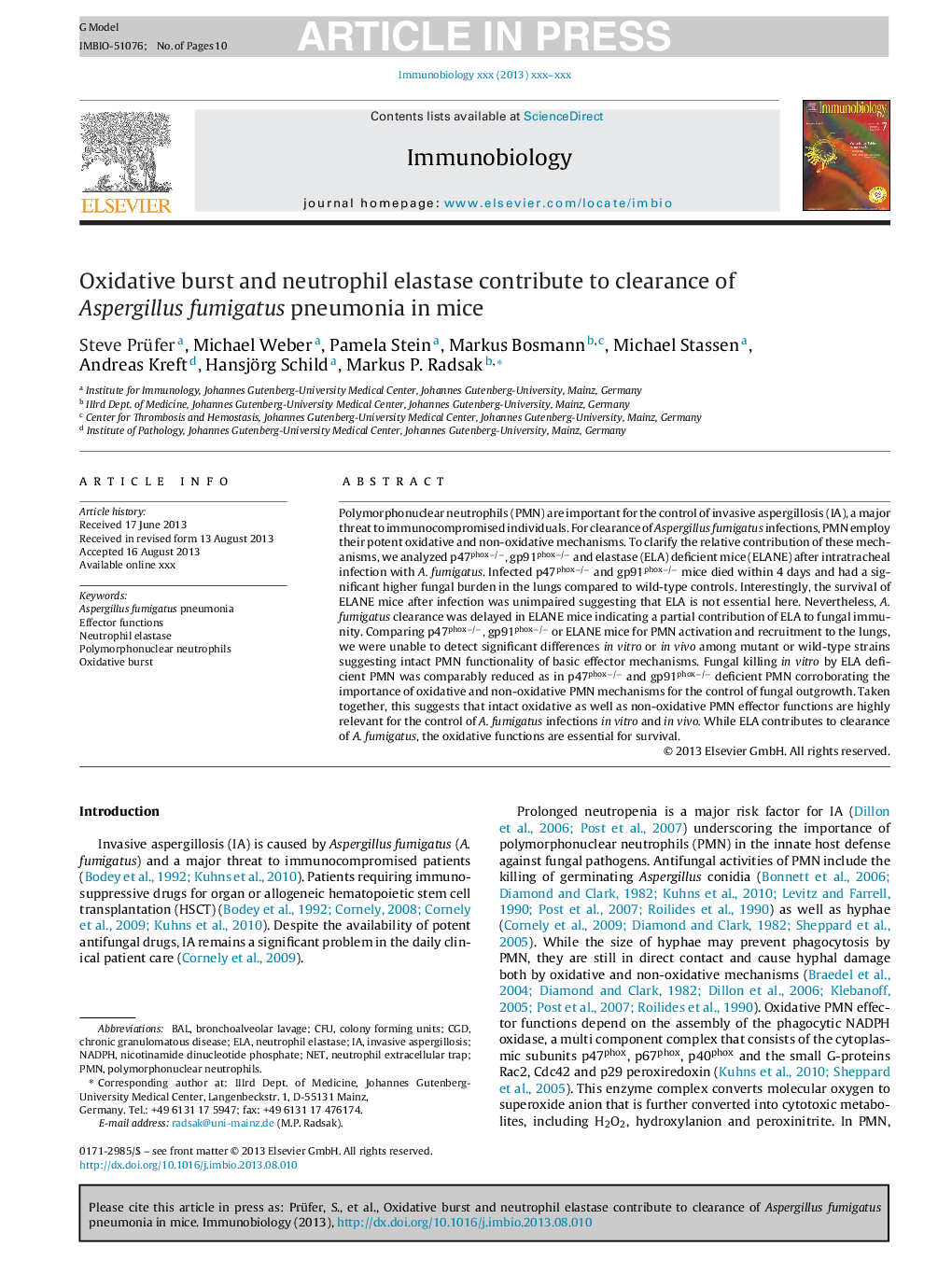| Article ID | Journal | Published Year | Pages | File Type |
|---|---|---|---|---|
| 10940956 | Immunobiology | 2014 | 10 Pages |
Abstract
Polymorphonuclear neutrophils (PMN) are important for the control of invasive aspergillosis (IA), a major threat to immunocompromised individuals. For clearance of Aspergillus fumigatus infections, PMN employ their potent oxidative and non-oxidative mechanisms. To clarify the relative contribution of these mechanisms, we analyzed p47phoxâ/â, gp91phoxâ/â and elastase (ELA) deficient mice (ELANE) after intratracheal infection with A. fumigatus. Infected p47phoxâ/â and gp91phoxâ/â mice died within 4 days and had a significant higher fungal burden in the lungs compared to wild-type controls. Interestingly, the survival of ELANE mice after infection was unimpaired suggesting that ELA is not essential here. Nevertheless, A. fumigatus clearance was delayed in ELANE mice indicating a partial contribution of ELA to fungal immunity. Comparing p47phoxâ/â, gp91phoxâ/â or ELANE mice for PMN activation and recruitment to the lungs, we were unable to detect significant differences in vitro or in vivo among mutant or wild-type strains suggesting intact PMN functionality of basic effector mechanisms. Fungal killing in vitro by ELA deficient PMN was comparably reduced as in p47phoxâ/â and gp91phoxâ/â deficient PMN corroborating the importance of oxidative and non-oxidative PMN mechanisms for the control of fungal outgrowth. Taken together, this suggests that intact oxidative as well as non-oxidative PMN effector functions are highly relevant for the control of A. fumigatus infections in vitro and in vivo. While ELA contributes to clearance of A. fumigatus, the oxidative functions are essential for survival.
Keywords
Related Topics
Life Sciences
Biochemistry, Genetics and Molecular Biology
Cell Biology
Authors
Steve Prüfer, Michael Weber, Pamela Stein, Markus Bosmann, Michael Stassen, Andreas Kreft, Hansjörg Schild, Markus P. Radsak,
